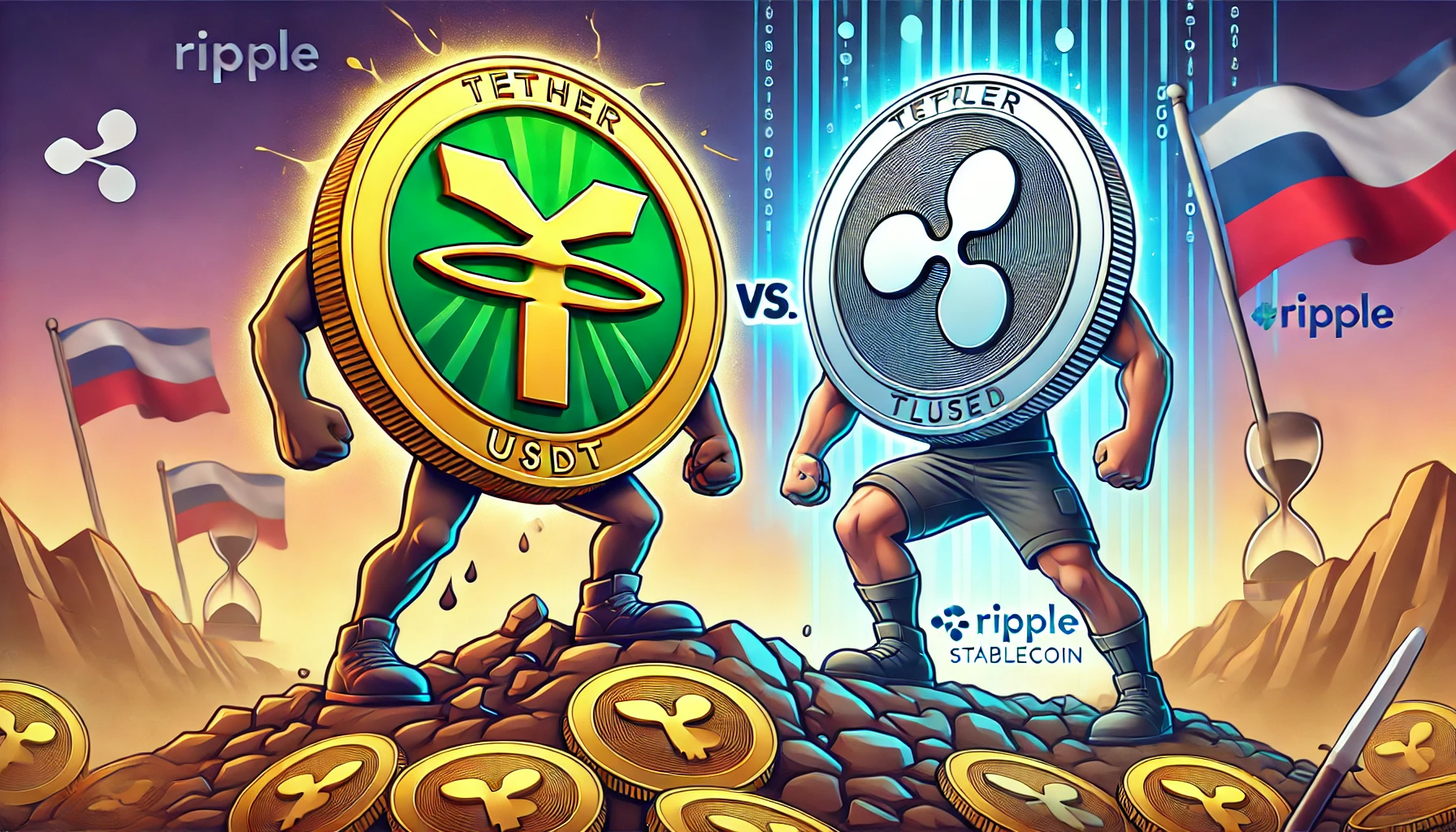Welcome to Bitvision’s deep dive into the wild west of digital finance, where stablecoins aim to bring stability to the volatile crypto frontier. As we gallop into the future, let’s examine the tumultuous tale of Tether (USDT) and why the future might favor Ripple’s upcoming RLUSD.
The Tether Saga: A Stablecoin Soap Opera
Tether’s USDT was introduced as the bedrock of the stablecoin market, promising that each token would be backed by a real US dollar. Fast-forward to today, and there are 69 billion USDTs in circulation, 48 billion minted just this year. In theory, Tether should have $69 billion in reserves, making it comparable to one of the top 50 U.S. banks. But here’s where the plot thickens: Tether’s claims of full USD backing were as solid as a house of cards.
Unmasking the Illusions
In 2021, regulators revealed that Tether’s claims were a mirage. Investigations found that Tether was only fully backed for 27.6% of the days over a 26-month period. Instead of transparent audits, Tether offered a mix of unsecured receivables and non-fiat assets, effectively dressing up in a dollar costume without the cash. It’s like promising a buffet and serving crackers.
Regulatory Rodeos
Tether’s regulatory run-ins are legendary. In 2019, the New York Attorney General (NYAG) nailed Tether and its sister exchange Bitfinex for misleading the market about their reserves. This led to a settlement of $18.5 million and a trading ban in New York. The U.S. Commodity Futures Trading Commission (CFTC) slapped Tether with a $41 million fine for false claims about its reserves. Despite these spankings, Tether remains an unregulated offshore entity, dodging full transparency like a cat avoids a bath.
Risks and Red Flags
Tether’s murky waters are teeming with risks. A recent S&P risk assessment rated Tether a lowly four out of five, citing limited transparency and a lack of regulatory framework. Questions about its reserve assets and significant historical holdings in Chinese securities add to the unease. JPMorgan’s report on stablecoins warned that Tether’s dominance could spell trouble, especially with pending regulations potentially choking its offshore operations.
Uphold’s Regulatory Compliance Move
Bitvision’s twitter: https://x.com/DefiFinace
Adding to the mix, New York-based crypto exchange Uphold announced it will delist six stablecoins on July 1st to comply with the European Union’s Markets in Crypto-Assets Regulation (MiCA). The affected coins are Tether (USDT), Dai (DAI), Frax Protocol (FRAX), Gemini dollar (GUSD), Pax dollar (USDP), and TrueUSD (TUSD). This move underscores the tightening noose of regulation around stablecoins, particularly those shrouded in controversy.
Enter Ripple: The New Sheriff in Town
As Tether’s tale raises eyebrows and blood pressure, Ripple is gearing up to launch its stablecoin, RLUSD, in July. Ripple, known for its robust compliance and transparent operations, aims to offer a stablecoin that lives up to its promises. With upcoming EU regulations like MiCA pushing for stricter oversight, Ripple’s RLUSD might be the white knight stablecoin enthusiasts are hoping for.
The Road Ahead
Stablecoins are poised to play a pivotal role in the future of finance, bridging the gap between traditional currencies and the crypto world. But as the Tether saga illustrates, the journey is fraught with challenges. Transparency, regulatory compliance, and robust backing are not just buzzwords but necessities.
In this ever-evolving landscape, Ripple’s RLUSD could set new standards, offering a stable and trustworthy stablecoin. As for Tether, it’s high time they cleaned up their act or risk being unseated by more reliable contenders. The future of stablecoins is bright, but only for those who can walk the talk.
So, saddle up and watch this space because in the world of stablecoins, the only constant is change, and the stakes have never been higher.


[…] Stablecoins are set to transform global payments. Analysts predict that the stablecoin market could exceed $300 billion by 2026. Businesses are increasingly adopting stablecoins for cross-border transactions due to their stability, lower fees, and faster settlement times than traditional fiat currencies. Governments also explore stablecoins as a bridge between crypto and traditional financial systems. […]